#laurent bourgeois
Text
Les Twins performing in the Renaissance World Tour with Beyoncé 👑👑👑
13 notes
·
View notes
Text









W A T C H I N G
#MIB INTERNATIONAL (2019)#MEN IN BLACK INTERNATIONAL#MEN IN BLACK#CHRIS HEMSWORTH#TESSA THOMPSON#LIAM NEESON#Rebecca Ferguson#Kumail Nanjiani#Rafe Spall#Laurent Bourgeois#Larry Bourgeois#Emma Thompson#Kayvan Novak#Tim Blaney#Spencer Wilding#Marcy Harriell#SCI-FI#ACTION FILM#COMEDY#WATCHING#FRANK THE PUG
13 notes
·
View notes
Text
if you believe the shit about les twins you're a dumb bitch. out of all the things to lie about you'd think they'd come up with better lies
5 notes
·
View notes
Text
Lord, these new LT fans are DELULU af. Was that us? Were we that bad?
4 notes
·
View notes
Text
Queen Bey CUFF IT
Renaissance 📍Miami, FL
#music#concert#r&b#beyonce#renaissance world tour#renaissance#explore#queen bey#cuff it#miami florida#beyoncé concert#les twins#larry bourgeois#laurent bourgeois
5 notes
·
View notes
Text
0 notes
Text






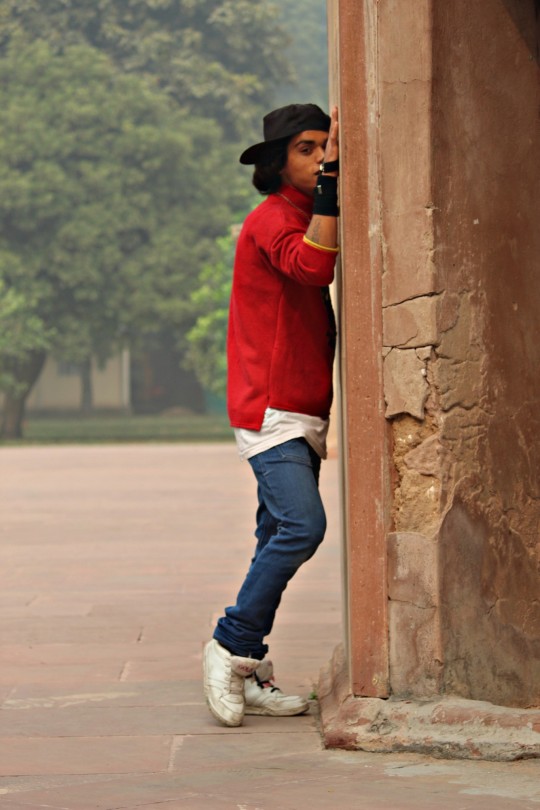



#Hii 👋 Vijay Kumar LAST KINGS 👑 FAN'S ❤️ Best wishes to all of you on BhaiDujnewpicsMyGodLesTwinsLaurent sir🙏Looks Me photo shoot - 2019#laurent bourgeois#big fan#les twins#street#dancer#vijay kumar#Bollywood#beatkiller#Spotify
1 note
·
View note
Text
Idea: Crossover/AU where Chloe Bourgeois gets on the Infinity Train and joins the Apex
Idk how niche this is, but I just had a thought once a little bit of my old and slightly older brainrots came back to haunt me: Chloe Bourgeois and Infinity Train, more specifically book 3. Since I have been grasping at creative straws for 2 months, here are a few bullet points/ideas that I may work with later. Big maybe, this newfound motivation might die tomorrow lol. Either way, hope you few people who find this interesting enjoy!
Also mlb season 5 spoilers I think? I dunno I just kind of read episode summaries now I have no idea what season we're on.
Imagine if at 15, Chloe Bourgeois unknowingly escapes to the train right before she was forced to live with her mother, but instead of going on a journey of self discovery, she has the 'fortune' in bumping into the Apex instead.
(oh also while all of this is very found family like, I acknowledge that under the surface these are still three flawed extremely traumatized kids feeding into each others problems and creating/building a cult that kills denizens/destroys cars, like that's all still happening in the background of this LMAO)
When the crying teenager is brought into the mall by the few younger members of the group, it's more of the same for Grace and Simon, and the normal Apex welcomes begin.
Nobody really realizes or cares who Chloe is, due to their ages when boarding the train. It would bother her on a normal day, but given everything that has happened prior to boarding, it kind of sends her spiraling into more crying/anger.
While Simon is in no mood for it, Grace goes into full damage control mode, comforting and leaving her alone in one of the nicer areas of the mall car so she can fully calm down.
Simon is annoyed by it, but Grace plays it off as playing the long game so to speak in order to get Chloe to join. It's a half truth, as she feels empathy for Chloe after hearing a small bit of the events leading to the train picking her up. (mainly that someone left her, bringing up memories of Grace's first time meeting Simon)
Speaking of empathy, this is dialed up to an eleven when Grace gets to know her better, and finds out about her kind of similar living situation (neglectful parents) and her history of friends/conflict at school (she doesn't really go into the whole superhero thing because she feels like it would take attention off her. Besides, they don't seem to know or care much about what's going on outside anyway)
Now friends, Grace decides to take Chloe to her first car raid with just her and Simon. Chloe goes along with it to both get her anger out on something and impress her new friend. I'd expect they'd hit an 'easy' car first, like the cube car from Book 2.
Simon is now annoyed and jealous now that Grace is giving more of her attention to someone else, but after the car is thoroughly destroyed Chloe gives more information on how she got onto the train. As soon as she mentions being essentially abandoned and replaced by her father, he empathizes with her immediately and actually gets pissed off for her as well (Brought to you by Samantha fueled abandonment issues). They bond over the trash talking of her dad, and they become official friends soon after.
With Chloe fully on their side (and their friendship growing fast), they finally decide to tell her about what the Apex is all about. Full theatrics, conductor and everything.
Knowing the crazy stuff that happened in Paris on a daily basis (which is only reaffirmed by the train), she doesn't doubt the existence of the Conductor, but has reservations about his godlike status among the group ("Are you serious? That thing is probably just a glorified sentimonster!"). However, she keeps these to herself, as she deep down, she doesn't want them to abandon her.
What she lacks in 'belief', she makes up for in fierce loyalty. The only thing Chloe has to her name now is her found family The Apex, and she's not just gonna lose that, no matter how many nulls have to pay. Besides, just because she doesn't believe in the Conductor's power, doesn't mean that she isn't greatly invested in beating the train...
(Oh also, a little bonus. Depending on if the headcanon/theory is true, I'd imagine Simon and Chloe would speak to each other in French on occasion to mess with Grace.)
#It was just a passing thought until I realized it would fit nicely within the suspected timelines of both shows.#Chloe Grace and Simon are all around the same age according to both wikis#Miraculous is still stuck in 2015ish while book 3 took place in/around 2020#sorry if any of the lore is off I'm rusty with Infinity train and EXTREMELY rusty with miraculous#This is kind of a exercise/idea dump to get myself writing again#mlb season 5 spoilers#idk is that a thing still? I don't even watch miraculous anymore I just read the synopsis/watch clips lolol#infinity train#miraculous ladybug#chloe bourgeois#grace monroe#simon laurent
8 notes
·
View notes
Text










Beyoncé and Les Twins 👑👑👑
#Repost @kingbeyhive
——
(Video credit 1) #Repost @lestwinsmost
——
(Video credit 2) #Repost @sirchella
——
11 notes
·
View notes
Text
The way they argue is funny and adorable 😂😂
6 notes
·
View notes
Photo




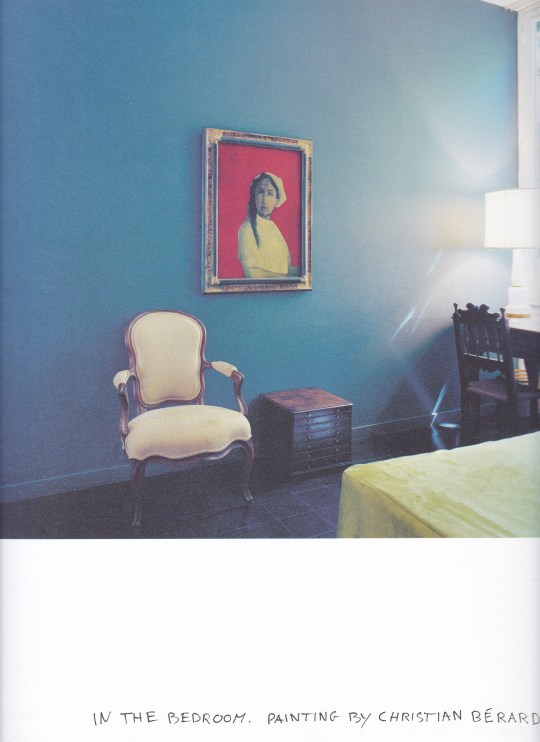




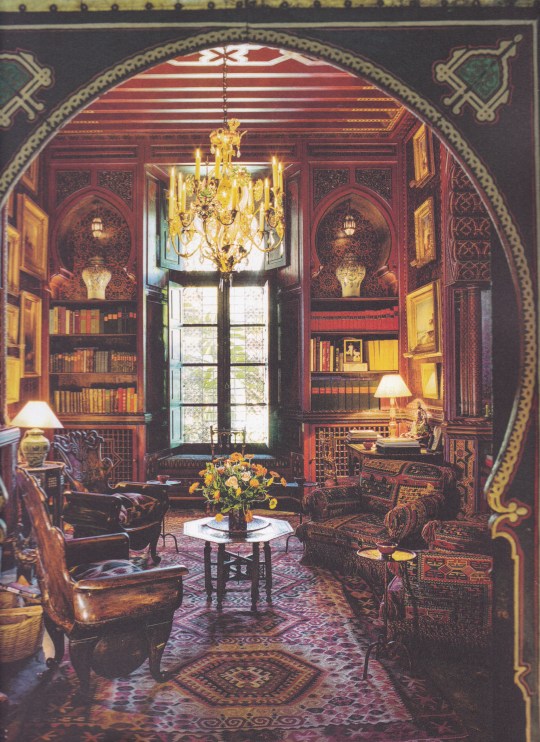
François Halard 2, A Photographic Life
Rizzoli Int., New York 2019, 492 pages, Hardcover,32,5 x 25 cm., ISBN 978-0-8478-6565-9
euro 89,00
email if you want to buy [email protected]
This volume presents the famed photographer's newest lush images of the stunning interiors of acclaimed designers, artists, and tastemakers.
Francois Halard's unique photographic sensibility--old-world elegant and bohemian, accessible and personal--is unmistakable. Each image is imbued with the intimate knowledge of design history, each story a lesson in a master's point of view.
This book is a continuation of his last volume of gorgeous photography of grand interiors, artists' studios, and architectural pilgrimage sites. Each story's subject matter is not just a personal passion of the photographer, but also an indispensable chapter in design history: Philip Johnson and Charles James's de Menil House, Giorgio Morandi's studio, Rick Owens's radical Paris apartment, Eileen Gray's recently restored modernist home on the French coast, Dries Van Noten's verdant garden and home, the home and studio of Louise Bourgeois in New York, and many more.
Like his first book, Francois Halard: A Photographic Life will be a coveted, indispensable must-have visual resource for all lovers of interiors, glamour, and style.
27/05/22
orders to: [email protected]
ordini a: [email protected]
twitter: @fashionbooksmi
instagram: fashionbooksmilano, designbooksmilano tumblr: fashionbooksmilano, designbooksmilano
#François Halard#photography books#libri di fotografia#artist's studios#architectural sites#interiors#Giorgio Morandi#Dries van Noten#Louise Bourgeois#Rick Owens#Charles james#Eileen Gray#Manolo Blanik#Saul Leiter#Raphael at Vatican#Yves Saint Laurent#designbooksmilano#fashionbooksmilano
49 notes
·
View notes
Text
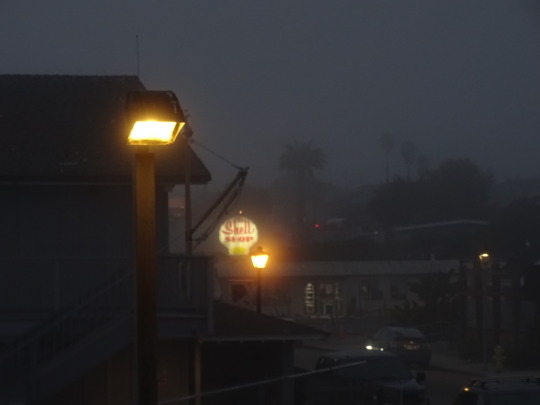











Halloween
Halloween 2023 on October 31 is undoubtedly the creepiest, most ghostly holiday of them all. Children dress up as Batman, the Joker, Wonder Woman, or some other favorite character; go to parties or walk their neighborhoods with jack o’ lanterns full of sweets as they go trick-or-treating. Spooky decorations fill windows and porches and screams can be heard in living rooms up and down the country as we collectively binge our favorite horror movies.
Halloween 2023
Though Halloween is expected to look somewhat different this year, See’s Candies wanted to let everyone know that you can still celebrate and have fun, safely! There are many ways to celebrate Halloween that don’t involve going door-to-door trick-or-treating in search of Halloween sweets.
History of Halloween
The word, Halloween or Hallowe’en dates from before the 16th century and draws from its early Christian past. In old Scottish, Hallowe’en translates as “All Hallows’ (holy) Even” referring to “All Hallows’ Evening,” the day before All Hallows Day, a solemn occasion in which all of the Catholic Church’s heavenly saints were honored. By the 18th century, Halloween shows up with the spelling we know today.
Halloween History
Going back in time, Halloween is fascinating because it has lots of practices that date back to its pagan origins. For example, the Halloween tradition of bobbing for apples reminds us of the Roman invasion of England. As part of Roman paganism, they brought an apple tree, symbolic of Pomona, Goddess of Plenty. During an annual festival, young marriage-minded people bit into apples floating in the water. According to beliefs, whoever bit the apple was next to marry.
But it’s really the Celts we have to thank for Halloween. They were ancient people who lived in the areas of modern-day Ireland, northern France, and in the UK. Halloween’s pagan roots go back thousands of years to the Celtic Fire Festival of Samhain, which recognized the end of the harvest season and the start of their new year on November 1.
During this festival, pagans wore costumes and lit fires to keep the bad spirits away – keep that in mind when you’re donning your Dracula fangs! With the dark nights of winter representing death, the Celts believed that on October 31, the dead returned to walk among the living. Sounds kind of zombie-ish, right?
The Christian Influence
As Christian influence on society began to grow around the 8th century, new customs and traditions were brought in and merged with those of the Celts. Christians would celebrate All Souls Day on November 2, which was a day to honor the dead in much the same way that the Celts did on Samhain. It was around this time that the evening before the celebration became known as All Hallows Eve.
After All Hallows Day was officially switched to November 1 in 835, October 31 became known as All Hallows Eve and the holiday we know and love today was starting to take shape. By the 12th century, these days had gained holy importance throughout Europe, and customs such as ringing the church bells for the souls of those in purgatory had become widespread.
A typical Halloween would see a mournful crier parading through the streets, dressed all in black, ringing bells, and encouraging the locals to pray for the souls of the dead. It was around this time that “souling” began to happen, but there’s more about that further down in the trick-or-treat section. By the Middle Ages churches were too poor to display the relics of martyred saints and so churchgoers began dressing up as them every year instead. This could partly explain where the tradition of dressing up on Halloween stems from.
Halloween in America
Halloween became popular in America in the 19th century, with enthusiasm for the holiday being brought across with the Irish and Scottish immigrants who were arriving at the time. The biggest change from Halloween’s earliest roots is that it becomes more secular than religious. By the 1920s and 30s, Halloween parades and parties became a major part of the festivities and the holiday was celebrated from coast to coast, regardless of race or religious background.
Trick-or-Treating
Trick-or-treating is said to stem from the practice of “souling”, which is a Medieval practice where churchgoers would go between different parishes and ask the rich for pastries which were known as soul cakes. In return, they would pray for the souls of them and their friends. While “souling”, people would carry with them lanterns made of hollowed-out turnips. That turnip is now of course a pumpkin and it is believed that that the jack-o-lantern originally represented the souls of the dead.
By the late 19th century children in Scotland and Ireland were dressing up in costume and going from door to door accepting gifts from neighbors, this practice was known as “guising”. The children would generally be given bits of food for their efforts. The first recorded instance of this in America is in 1911. The term trick-or-treat was first used in Alberta, Canada, in 1927, and by the 1930s it was starting to become a popular activity.
Modern Day Halloween
By the 1950s Halloween became a holiday that was primarily for the children. Trick-or-treating was commonplace as kids went around their neighborhoods in costume collecting candy. Halloween became increasingly embedded in popular culture and horror movies would often be released to coincide with the holiday. Movies such as “Nightmare on Elm Street,” “Halloween,” and “Friday the 13th” have all become classics associated with the holiday.
Halloween is now America’s second-largest commercial holiday, with $6 billion being spent on it each year. Numerous traditions such as trick-or-treating, costume parties, and watching horror movies all contribute towards a huge occasion that is celebrated throughout the country.
Halloween plays off our phobias. Killer clowns and antique dolls creep you out? Bats and spiders make your skin crawl? Does the sight of blood make you faint? Don’t go into that room and don’t go out on Halloween. But if you do — look over your shoulder! On Halloween, be a kid again or take on a new persona. Watch out for ghosts and goblins and things that go, “bump” in the night. Eat as much candy as your tummy can hold. Enjoy feeling totally scared for just. one. night. Happy Halloween, everybody!
Halloween timeline
800s
The Church designates All Souls Day
As Christianity continued to merge with Celtic traditions, historians believe that All Souls Day was an effort by the early church to sanction a holiday that honors the dead without totally doing away with the Celtic New Year on November 1.
1500s
"Guising" is the ancient grandparent to "trick or treat"
In Scotland and Ireland, young people would go door to door in their communities, reciting poetry, singing, telling jokes or even doing tricks to get free food and gifts as part of the day to honor the dead.
May, 1693
Which witch is which in Salem?
The infamous Salem Witch trials' officials falsely accused, then tortured and killed 19 girls, women and men.
Late 1800s
American Halloween is less religious, more secular
Halloween de-emphasizes ghosts and goblins and replaces them with community gatherings, games, food and fun when newspaper editors and community leaders ask parents to refrain from celebrating anything scary for Halloween.
1920
Kids declare "Trick or Treat" launching a new Halloween tradition
Although the custom of going from door to door asking for treats dates back to the Middle Ages, American youngsters put a new spin on it with "Trick or Treat."
Halloween By Numbers
172 million – Americans celebrating Halloween each year 69% – of people who plan to hand out candy $8.8 billion – total Halloween spend in 2019 $86.27 – amount spent on decorations, candy, and costume by the average consumer 48% – of people wear a costume on Halloween 46% – of people carve a pumpkin 16% – of people dress up their pets 36 million – trick or treaters each year
Halloween Activities
Hand out candy
Visit a haunted house
Enjoy campy fun listening to the original "War of the Worlds"
If you're too old for trick or treating, it's time to return the favor! Don a wig and a mask (but not too scary!) and with groans, howling and chains rattling from your audio setup, hand out lots of candy. Create some serious Halloween fun for the kiddies!
Lose control for a little while in a haunted house. Find out who jumps the most — but no matter how crazy the scene, remember, it's all just make-believe fun! (Or, IS it?)
On October 30, 1938, Orson Welles and his Mercury Theatre on the Air program broadcast a chilling version of H.G. Wells' classic, "War of the Worlds." So many people believed the broadcast was genuine, that there was massive panic all over the country. Invite some folks over, pop some corn, eat some candy and go back in time to listen to one of the great voices play on your emotions right before Halloween!
5 Halloween Facts We're Dropping Into Your Trick Or Treat Bag
"Soul cakes" go way back
Illinois, the pumpkin capital — who knew?
Candy corn was literally called, "chicken feed" — seriously?
Look closely at the Michael Meyer's mask in "Halloween."
During WWII, no sugar — no "trick or treat"
The practice of giving “soul cakes” goes back to England in the Middle Ages when the poor or “soulers” went door to door receiving small, round cakes or “souls” during All Hallow’s Eve on October 31 as a way to remember the dead. Giving and receiving soul cakes continues today in other countries including Portugal and Ireland.
15,000 acres yields over 500 million pumpkin pounds, according to the U.S Department of Agriculture.
Candy corn, which looks remarkably as it did in the 1880s when it came on the market, was originally sold as "chicken feed" with rooster images on the boxes as a way to target an agricultural market, according to the "National Geographic."
Have you ever noticed that in the classic film, “Halloween,” the Michael Meyers’ mask looks remarkably similar to William Shatner? Before widening the eyes and painting it white, the iconic look came from a “Captain Kirk” mask the “Halloween” movie producers found in a Hollywood magic shop in 1978.
With sugar rationing part of the war effort, Halloween was put on "pause" until after WWII. Then, candy companies boosted their advertising after the war, turning Halloween into the next major holiday after Christmas.
Why We Love Halloween
Release your inner ghoul
It's an excuse to party
It's a night of nostalgia for adults
Halloween gives us a reason to see a different side of ourselves. Whether you go for goofy, or opt for spooky, this ghoulish holiday is the day to don a costume and go wild!
Is there a better day of the year for groups of all ages and cultures to party into the night? Halloween seems to know no boundaries. Whether children bob for apples or adults play "Pin the Tail on the Whatever," Halloween parties are absolutely the best!
For many people across the world, Halloween brings back a lot of memories. We get to be kids again but some of us can play out our fantasies. Bottom line, Halloween is a fun night filled with colors, candy and costumes.
Source
#Bohus Fortress#Morro Bay#Black Strands (Great Wind) by Laurent Gagnon#public art#Quebec City#Québec#Ottawa#Ontario#Canada#Sweden#California#Parliament Hill#Maman by Louise Bourgeois#USA#Skull & Bones Mask from Gary Bromley#original photography#31 October#Halloween#AllHallowsEve#AllSaintsEve#travel#vacation#cityscape#architecture
1 note
·
View note
Photo

C'est fou comme les gens ont de moi cette image de femme sophistiquée, glaciale. C'est une telle erreur, c'est tellement mal me connaître.
- Catherine Deneuve on herself in Belle de Jour (1967)
In anticipation of a new film this summer by Catherine Deneuve called ‘Bernadette’ where she plays Bernadette Chirac, the wife of French Jacques Chirac, I’ve been re-watching some her back catalogue of films. She’s done over 64 films and at almost 80 years old she’s still going strong. And yet out of her many films I’ve always been drawn back to one film which has become a cult classic. Watching it and re-watching it and even gorging on books on its making, new intriguing details reveal themselves about this landmark French art house classic - Belle de Jour (1967).
I once had the privilege of having dinner with her - or rather sat around the same table - through a Parisian host and his lovely wife who had gathered an eclectic group of friends across generations together. I was too self-conscious to talk about her film career directly. I was on surer ground when we indulged in small talk where she was perfectly down to earth and very pleasant. I felt it would be rude to go all fan girl on her and pepper her with questions about Belle de Jour in particular as she’s known to be very ambivalent about her experience of the film - a film that really defined her in the eyes of many people.
But it didn’t mean she didn’t recognise its cultural importance though as she was quite happy to amuse us with a funny story about Belle de Jour. A newly restored 35mm version was funded by the fashion house Saint Laurent back in 2018. Deneuve always had a close relationship with Yves Saint Laurent and also the fashion house. She was the one to introduce Buñuel to Saint Laurent. So the fashion house had a glitzy premiere in New York. But they didn’t count on many of their guests being late. Most of the guests were stuck in the New York traffic and the rain. However Martin Scorsese was the only one to get out of cab and run like a mad man through the pelting rain and huge traffic. A true cinephile, he was so desperate to see the film restored to its former glory that he would go to any lengths to see it.

In Belle de Jour, Catherine Deneuve, whose limpid beauty is capable of sustaining any interpretation, is a perfect Severine and demonstrates a remarkable control in progressing, with enormous economy of gesture and movement, from frigidity to physical warmth as the bored housewife who indulges in part time sex work.
“I felt they showed more of me than they’d said they were going to,” Catherine Deneuve remarked to Pascal Bonitzer in 2004, about the making of Luis Buñuel’s 1967 Belle de jour. “There were moments when I felt totally used. I was very unhappy.”
The story of Séverine, a deeply disenchanted haute bourgeois Paris housewife who finds erotic liberation through byzantine psycho-sexual fantasies and part-time work at an upscale brothel, Belle de jour certainly made extreme demands of Deneuve: her character is flogged, raped, and pelted with muck, among other assaults. But despite her objections to the way she was treated and her difficulties with Buñuel, Deneuve’s performance in Belle de jour turned out to be one of her most iconic.

Deneuve, who had become a star only three years earlier, as the melancholy jeune fille in Jacques Demy’s 1964 all-sung musical The Umbrellas of Cherbourg, was just twenty-three when Belle de jour came out; notably, Buñuel’s film was released in France less than three months after Demy’s radiant, MGM-inspired musical The Young Girls of Rochefort, starring Deneuve and her real-life sister Françoise Dorléac.
But Belle de jour, more than any other film from the first decade of her career, defined what would become one of the actress’s most notorious personae: the exquisite blank slate lost in her own masochistic fantasies and onto whom all sorts of perversions could be projected. (Deneuve as deviant tabula rasa was first seen in Roman Polanski’s 1965 Repulsion, in which she plays a damaged beauty plummeting into psychosis; but Belle de jour doesn’t portray its heroine as mad, instead remaining deliberately ambiguous about the origins of her unconventional desires - and presaging the bizarre libertines she would later play in such films as Marco Ferreri’s Liza, 1972, and Tony Scott’s The Hunger, 1983.)

Buñuel was at a very different stage of his career from his young star, but Belle de jour represented a peak for him as well, the greatest - and most successful - film of his extremely rich late period. These works, bookended by 1964’s Diary of a Chambermaid and 1977’s That Obscure Object of Desire (his final film), were made mostly in France - where Buñuel had begun his filmmaking career with the incendiary, surrealist Un chien andalou (1929) - following the exiled Spanish director’s two decades in Mexico.
Many of these late projects were cowritten with Jean-Claude Carrière and focus intensely on sexual perversion (a theme that recurs throughout Buñuel’s work). Belle de jour certainly falls into that category, and also, typically, skewers the entitled classes. Yet it stands out as the director’s most intricate character study—but of a protagonist who resists definition; the heroine, frequently trussed up and mussed up, retains an odd, opaque dignity in her debauchery.

In that same interview with Bonitzer, Deneuve was judicious enough to distinguish her experience of making Belle de jour from the final product, calling it a “wonderful film.” But her first meetings with Buñuel hinted at the duress that was to follow. According to John Baxter’s 1994 biography, Buñuel, it took time for the director to “warm to” his star: “He felt, with some justice, that she had been foisted on him, first by the Hakims [Belle de jour’s producers], then by her lover of the time, François Truffaut.” After dining with Buñuel at his house, the book recounts, Deneuve “left with little more than an impression that he disliked actors in general and was reserving his decision about her. The only advice he offered was the advice he had always given actors: ‘Don’t do anything. And above all, don’t . . . perform.’”
Though Deneuve deferred to her director, she was no puppet; Belle de jour is as much hers as Buñuel’s. The filmmaker, famously resistant to “psychological” interpretations of his work, stuffs Belle de jour with his trademarks, confounding any attempt to parse meaning: the surrealist blurring of fantasy and reality, fetishism, sexual perversion, blasphemy.
But as Séverine, Deneuve, despite operating in the nebulous realm between dream and waking, imbues the film with irresistible and very real lust - and luster. Sporting the chicest Yves Saint Laurent finery, Deneuve revels in the peculiar desires of her character while always inviting our own. As Buñuel himself acknowledges in his 1984 autobiography, My Last Sigh (published a year after his death), Belle de jour “was my biggest commercial success, which I attribute more to the marvelous whores than to my direction.” (Per Baxter, after the filming of Belle de jour, he would finally admit of his star, “She’s really a very good actress.”) Deneuve’s gift was to update the world’s oldest profession for her still-expanding résumé.

The director had some modifying to do as well. Buñuel, who adapted Joseph Kessel’s 1928 novel with Carrière, assessed the source material dryly in My Last Sigh: “The novel is very melodramatic, but well constructed, and it offered me the chance to translate Séverine’s fantasies into pictorial images as well as to draw a serious portrait of a young female bourgeois masochist. I was also able to indulge myself in the faithful description of some interesting sexual perversions.”
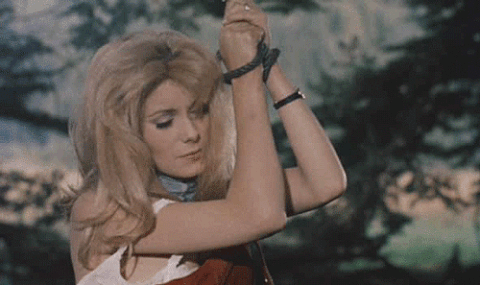
He wastes no time in establishing those bizarre erotic proclivities. In Belle de jour’s opening scene, Séverine and her doting husband of one year, Pierre Serizy (Jean Sorel), a handsome, dutiful surgeon, are snuggled close in a horse-drawn carriage; he interrupts the tender moment with the lament “If only you weren’t so cold.” She pulls away, defensive. The sound of horse bells, which has been increasing in volume from the film’s first shot - and will indicate Séverine’s dreams or fantasies throughout - stops. Pierre orders his wife out of the cab; when she refuses, he and the two drivers remove her by force. She is gagged, bound to a tree, and whipped by the coachmen, who are then instructed by Pierre to rape her. When one begins to ravish her, Séverine appears to be in ecstasy.
This carnal reverie is soon interrupted by the Serizys at home, preparing for their usual chaste bedtime ritual. Pierre, in white pajamas, asks his pale-pink-nightie-clad wife, under the covers in a separate bed, what she’s thinking about: “I was thinking about you . . . and us. We were out for a ride in a carriage”—a scenario Pierre has heard before.

The fantasy clearly belongs to Séverine alone; she finds erotic thrills in her secret thoughts of debasement and humiliation, her florid imagination compensating for her sterile, sexless existence. Her most private desires will soon be realized at 11, cité Jean de Saumur, the address of the boutique bordello run by Madame Anaïs (Geneviève Page), given to Séverine by Pierre’s louche friend Husson (Michel Piccoli).
At Madame Anaïs’s, Séverine - now going by the nom de pute Belle de jour, a reference to her two-to-five shift (she insists on being home when Pierre returns from his workday at the hospital) - is horrified at first but proves to be a quick study. A burly Asian client scares off her two seasoned colleagues with his mysterious, buzzing lacquered box, but she is absolutely transfixed; after the john leaves, she, lying prone on the bed, lifts her head, her luxuriant mane of blonde hair disheveled, to reveal a woman still drunk on orgasmic pleasure.

The contents of the box are one of the film’s many mysteries (when asked what is inside, Buñuel would reply, “Whatever you want there to be”). Yet the greatest enigma is Séverine herself: why does she recoil from the slightest sexual advance from her husband yet lose herself, both in fantasy and in her new line of work, in elaborate masochistic tableaux? “Pierre, it’s your fault too. I can explain everything,” Séverine insists to her husband in the opening fantasy sequence, as she’s being forcibly removed from the landau. But of course, she can’t - and won’t.
As in Repulsion, there are flashbacks to possible childhood trauma in Belle de jour. In one, a man appears to touch a young Séverine inappropriately; in another, she stubbornly refuses the Blessed Sacrament. But unlike in Repulsion, whose final, prolonged shot of a menacing family photo is offered as the root of Carole’s pathology, these scenes in Buñuel’s film are almost non sequiturs, presented not as psychological explanation but as blips in a baroque sexual surrealism.

As Séverine’s reveries and job demands become stranger and more mysterious - in one daydream, she is pelted with thick black mud by Pierre and Husson, who call her “tramp” and “slut”; a ducal client solicits her in the bois de Boulogne to perform in a necrophilic rite - Deneuve retains her porcelain, celestial inscrutability, while simultaneously transforming into an earthbound debauchee, delighting in her own defilement. Madame Anaïs (whose early, shameless flirtation with Séverine - who eventually reciprocates - is the first of the many moments in Deneuve’s filmography that would cement her status as a lesbian icon) touts her new employee’s regal bearing to prospective customers: “[She’s] a little shy, perhaps, but a real aristocrat.”
Séverine’s coworkers, Charlotte (Françoise Fabian) and Mathilde (Maria Latour), are constantly remarking on the impeccable cut and style of her ensembles. Yet what this seemingly untouchable goddess craves most is the brutality of her latest john, the thug Marcel (Pierre Clémenti), a rough with metal teeth, a walking stick that doubles as a shiv, and fetishwear (shiny boots of leather with matching overcoat) that could have been dreamed up in an atelier overseen by Kenneth Anger and Pierre Cardin.
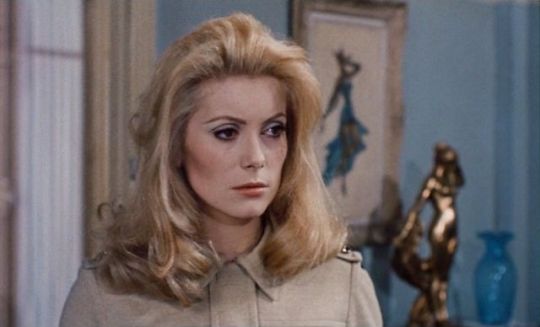
Séverine’s relationship with Marcel will lead to Pierre’s ruin - or does it? The ambiguous ending of Belle de jour suggests that everything that preceded it may have existed only in the heroine’s cracked dreamscape. Like the buzzing box, the film’s final scene is whatever you want it to be.
Yet one thing is certain: Deneuve transcends kink. And despite her misery during the Belle de jour shoot, she would return for even more bizarre treatment three years later in Buñuel’s Tristana, losing both her virtue and a leg.
Almost 55 years after it was made Belle de Jour continues to be a compelling film. It takes on greater curiosity for me as I live in Paris and there are Séverines aplenty that I come across. But the film also speaks to a non-French audience even today as it remains a shrewd commentary on the hypocrisy of social relations and sexual politics. Buñuel invites us to ponder the transgression of a socially respectable woman secretly being a prostitute in the afternoons, but I don’t think he bothered to pose the question why a socially respectable gentleman should be secretly visiting a prostitute in the afternoons - which happens more than one might think and that behaviour is normalised. Something to think about.
#deneuve#catherine deneuve#quote#french#film#movie#cinema#belle de jour#actress#luis bunuel#bunuel#film making#arts#culture#france#scorsese#personal#paris
145 notes
·
View notes